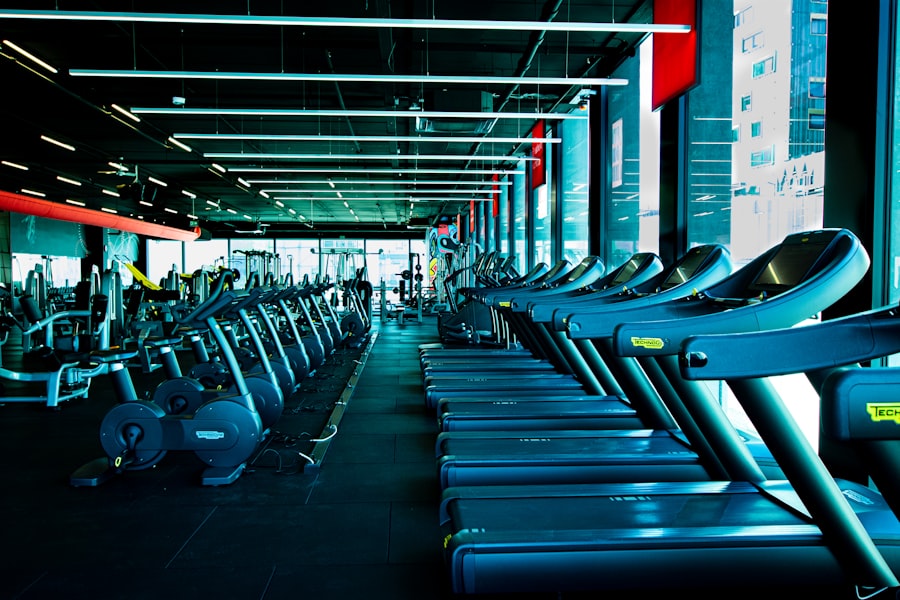
Functional fitness is a term that has gained significant traction in recent years, and for good reason. At its core, functional fitness refers to exercises and training regimens designed to improve your ability to perform everyday activities. Unlike traditional workouts that may focus solely on aesthetics or isolated muscle groups, functional fitness emphasizes movements that mimic real-life tasks.
This approach not only enhances your physical capabilities but also promotes a more holistic understanding of how your body works in various situations. When you engage in functional fitness, you are training your body to move efficiently and effectively. This means focusing on compound movements that involve multiple joints and muscle groups working together.
For instance, squatting, lifting, pushing, and pulling are all fundamental movements that you encounter daily. By incorporating these movements into your workout routine, you can develop strength, balance, coordination, and flexibility—all of which are essential for navigating life’s challenges with ease. Check out the latest hair treatments at hair.
Key Takeaways
- Functional fitness focuses on exercises that mimic everyday movements to improve strength, flexibility, and balance.
- Benefits of functional fitness include improved overall physical performance, reduced risk of injury, and better ability to perform daily activities.
- Functional fitness exercises include squats, lunges, deadlifts, push-ups, and planks, among others.
- Incorporating functional fitness into your routine can be done by adding functional exercises to your existing workout or by participating in functional fitness classes.
- Functional fitness can help improve everyday activities such as lifting, bending, and reaching, making them easier and safer to perform.
Benefits of Functional Fitness
The benefits of functional fitness extend far beyond the gym. One of the most significant advantages is the improvement in your overall physical performance. As you engage in exercises that mimic daily activities, you will find that tasks such as carrying groceries, climbing stairs, or playing with your children become easier and more enjoyable.
This newfound strength and endurance can lead to a more active lifestyle, allowing you to participate in activities you may have previously avoided due to physical limitations. Moreover, functional fitness can enhance your mental well-being. As you progress in your training and witness tangible improvements in your physical capabilities, you may experience a boost in confidence and self-esteem.
The sense of accomplishment that comes from mastering a challenging movement or achieving a personal best can be incredibly empowering. Additionally, the social aspect of functional fitness—often practiced in group settings—can foster a sense of community and support, further enhancing your motivation to stay active.
Functional Fitness Exercises

When it comes to functional fitness exercises, variety is key. You can choose from a wide range of movements that target different muscle groups while promoting overall body coordination. Some popular exercises include squats, lunges, deadlifts, kettlebell swings, and push-ups.
Each of these movements engages multiple muscles simultaneously, making them highly effective for building functional strength. Incorporating balance and stability exercises is also crucial for a well-rounded functional fitness routine. Movements such as single-leg deadlifts or stability ball exercises challenge your core and improve your balance, which is essential for preventing falls and injuries.
Additionally, incorporating resistance bands or medicine balls can add an extra layer of challenge to your workouts, helping you develop the strength needed for everyday tasks.
Incorporating Functional Fitness into Your Routine
| Benefits of Functional Fitness | How to Incorporate into Your Routine |
|---|---|
| Improves overall strength and flexibility | Include exercises like squats, lunges, and planks |
| Enhances balance and coordination | Integrate movements that mimic daily activities |
| Reduces the risk of injury | Focus on multi-joint movements and stability exercises |
| Increases functional capacity for daily tasks | Engage in activities that involve pushing, pulling, and lifting |
Integrating functional fitness into your daily routine doesn’t have to be overwhelming. Start by assessing your current activity level and identifying areas where you can incorporate functional movements. For instance, if you typically spend time at the gym focusing on isolated muscle groups, consider replacing some of those workouts with compound exercises that engage multiple muscles at once.
You can also incorporate functional fitness into your home workouts or even during your daily activities.
The key is to remain consistent and gradually increase the intensity of your workouts as you become more comfortable with the movements.
Functional Fitness for Everyday Activities
One of the most appealing aspects of functional fitness is its direct application to everyday life. By training your body to perform movements that mimic daily tasks, you are essentially preparing yourself for the physical demands of life. Whether it’s lifting heavy boxes during a move or bending down to tie your shoes, functional fitness equips you with the strength and flexibility needed to tackle these challenges with ease.
Moreover, functional fitness can enhance your overall quality of life. As you become stronger and more agile, you may find yourself engaging in activities that you once found daunting or exhausting.
Functional Fitness for Injury Prevention

Injury prevention is another critical aspect of functional fitness that cannot be overlooked. Many injuries occur due to poor movement patterns or weaknesses in specific muscle groups. By focusing on functional exercises that promote proper biomechanics and strengthen stabilizing muscles, you can significantly reduce your risk of injury.
For example, incorporating core-strengthening exercises into your routine can help stabilize your spine and pelvis during movement, reducing the likelihood of back injuries. Additionally, working on flexibility through dynamic stretching and mobility drills can enhance your range of motion and prevent strains or sprains during physical activities. By prioritizing injury prevention through functional fitness, you are investing in your long-term health and well-being.
Functional Fitness for Weight Management
Functional fitness can also play a vital role in weight management. As you engage in compound movements that elevate your heart rate and build muscle mass, you will likely experience an increase in calorie expenditure both during and after your workouts. This metabolic boost can aid in weight loss or maintenance efforts while promoting lean muscle development.
Furthermore, the emphasis on functional movements means that you are not only burning calories but also building strength and endurance simultaneously. This dual benefit makes functional fitness an efficient choice for those looking to manage their weight without spending hours at the gym. By incorporating a variety of exercises into your routine, you can keep your workouts fresh and engaging while working towards your weight management goals.
Tips for Success with Functional Fitness
To maximize your success with functional fitness, consider setting specific goals that align with your lifestyle and aspirations. Whether it’s improving your ability to lift heavy objects or enhancing your overall endurance, having clear objectives will help keep you motivated and focused on your progress. Additionally, don’t hesitate to seek guidance from a qualified trainer or coach who specializes in functional fitness.
They can provide valuable insights into proper form and technique while helping you design a personalized workout plan tailored to your needs. Remember that consistency is key; aim to incorporate functional fitness into your routine several times a week for optimal results. Lastly, listen to your body and allow for adequate recovery time between workouts.
Functional fitness can be demanding on your muscles and joints, so it’s essential to prioritize rest and recovery to prevent overtraining or injury. By following these tips and remaining committed to your functional fitness journey, you will undoubtedly reap the rewards of improved strength, mobility, and overall well-being.
If you are looking to enhance your functional fitness routine, you may want to consider incorporating progressive weight training. In a recent article on Sunset Health and Fitness, they discuss which dumbbells are best for progressive weight training. By choosing the right equipment, you can effectively challenge your muscles and improve your overall strength and endurance. Check out the article here for more information on how to take your functional fitness to the next level.


